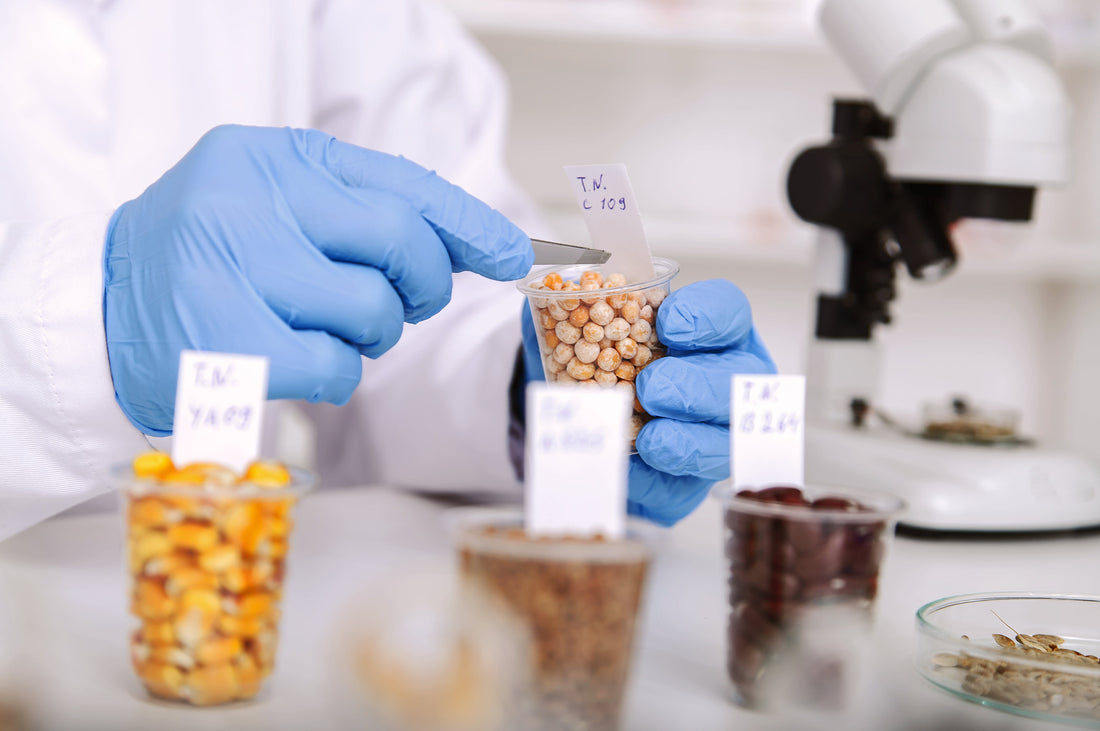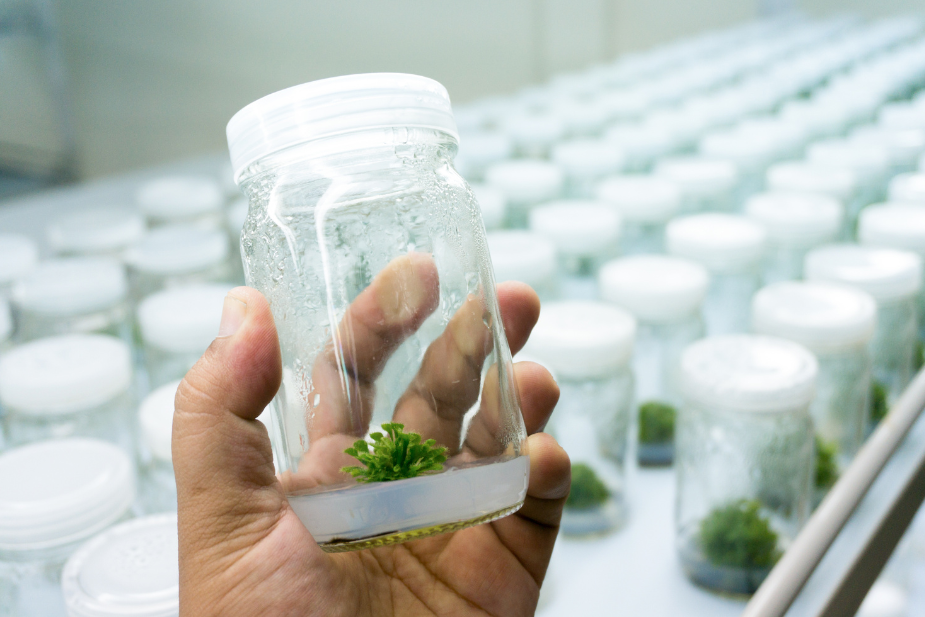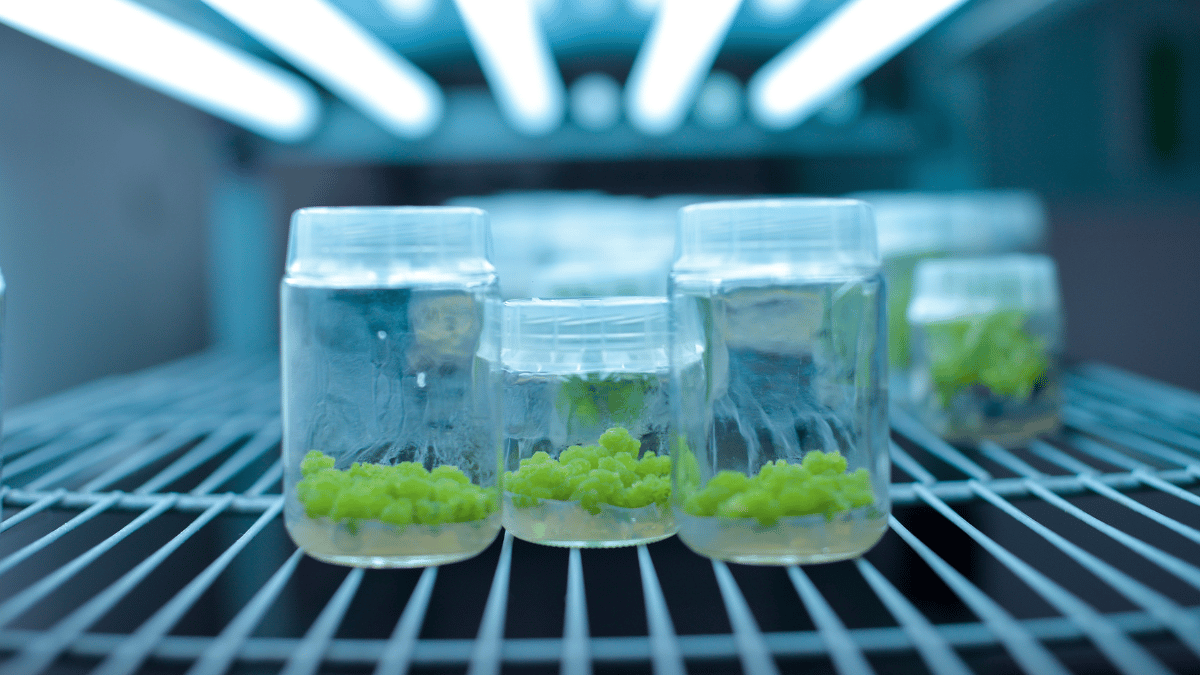
An Overview of Synthetic Seeds


The decades of research and advancements in biotechnology have presented newer strategies for the improvement of crops and their nutritional value. This includes cereal, legumes, woody forest trees, ornamental plants, etc. However, plant tissue culture, an important component of biotechnology, brought a different era of plant improvement.
The techniques of tissue culture have made it possible to culture and clone plants in labs, conserve specific genes, and allowed for the mass propagation of plants. Among various techniques, somatic embryogenesis gained much popularity because of the formation of an embryo from any somatic cells of the plant.
You can read more about somatic embryogenesis in the articles “Somatic Embryogenesis” and “Somatic Embryogenesis: the Factors and Process of Induction”.
The introduction of somatic embryogenesis increased the demand for artificial seeds and led to the concept of synthetic seeds. It was Murashige who first named the artificial seeds as “synseeds” and he defined it as an “encapsulated single somatic embryo”.
However, some plants were recalcitrant to somatic embryogenesis, and that introduced the present idea and definition of synthetic seeds.
In this article, you will learn about artificial or synthetic seeds, their types, applications, and advantages.
What is a Synthetic Seed?
It is defined as encapsulated plant tissues, such as somatic embryos, shoot buds, axillary buds, shoot tips, cell aggregates, and any other micro propagules that have the potential to grow like a plant, under in-vivo or in-vitro conditions when sown as seeds.
Figure: (1) Synseeds or synthetic seeds of a mulberry plant in soil, (2) Germination of synseeds into plantlets. Source:http://barc.gov.in/publications/nl/2000/200009-02.pdf |
The two types of synthetic seeds currently being developed include desiccated synthetic seeds and hydrated synthetic seeds.
1. Desiccated Synthetic Seeds
This involves the encapsulation of multiple somatic embryos followed by desiccation. The encapsulating material used in this case is polyoxyethylene (Polyox). This material doesn’t allow for the growth of the microorganisms and is non-toxic to embryos.
In this case, a mixture is prepared by using equal volumes of embryo suspension and a 5% (w/v) solution of polyox to give a final concentration of 2.5% polyox. Then by using a pipette the suspension is dispensed as 0.2 ml drops on to Teflon sheets. Then the drops are dried till they themselves leave the Teflon sheet.
2. Hydrated Synthetic Seeds
This involves the encapsulation of a single somatic embryo in hydrogel capsules. This technique is used in those plants which are recalcitrant for the somatic embryogenesis and sensitive to desiccation.
The most popular method of forming hydrated synthetic seeds is using Ca-alginate encapsulation. The procedure followed to produce hydrated synthetic seed involves the mixing of somatic embryos with a 2% (w/v) solution of Na-alginate. Then, the embryo is dropped into a 100 mM solution of Ca(NO3)2 by using a plastic pipette.
Of the two types of synthetic seeds, the desiccated synthetic seeds have greater potential to form synseeds and are closure to the true seeds.
Factors That Affect a Synthetic Seed’s Production
1. Selection of Plant Materials
The synthetic seeds can be produced by using somatic embryos or other plant propagules, However, a specific plant species supports a specific plant material for the production of synthetic seeds.
For example, somatic embryos have been successfully used to produce synseeds in several plant species that include Oryza sativa, Dalbergia sissoo, Curcuma amada, Hemidesmus indicus, etc.
Whereas, some plants support the production of synseeds when nodal segments are used. It includes Eclipta alba, Cannabis sativa, Solanum tuberosum, Gossypium hirsutum, etc.
Figure: (a) Schematic representation of synthetic seed production; (b) synseed seed produced from nodal segments of Tylophora indica.  Source: Faisal, M., & Alatar, A. A. (Eds.). (2019). Synthetic Seeds. DOI:10.1007/978-3-030-24631-0 |
2. Selection of Encapsulation Matrix
The encapsulation of seeds is an essential factor that determines the production of synseeds. So, there are some qualities that the encapsulating material should have if it’s going to be used for the production of synseeds. It includes:
- It must not damage the embryo.
- The coating should be mild to protect the embryo.
- The coating should be durable for rough handling during manufacture, storage, transportation, and planting.
- The coat must contain all the essential growth materials such as nutrients and growth regulators.
- The formed synseeds should be transplantable using the existing techniques.
The most widely used encapsulating material is sodium alginate. However, there are some other agents as well that are used with sodium alginate for encapsulation. It includes gelatin, potassium alginate, sodium pectate, and carrageenan.
Advantages of Synseeds Production
The advantages of synseeds production are given below:
- Easy handling.
- Short- and long-term storage capacity.
- Genetic uniformity.
- Low-cost quality plant materials are required.
- It allows the transportation and exchange of germplasm between national and international laboratories.
Application
- The production of synseeds facilitates the growth of several plants that have low seed viability, seedless fruit, and poor germination rates, and that depend on mycorrhizal–fungal symbiosis for germination.
- It is very useful when it comes to genotypes selection, germplasm preservation, and in vitro propagation of endangered, rare, and commercially important plants.
- It also allows the conservation of plant species through short- and medium-term preservation.
References
- Faisal, M., & Alatar, A. A. (Eds.). (2019). Synthetic Seeds. DOI:10.1007/978-3-030-24631-0
- Bhojwani S. S. and Razdan M. K. (1983). Plant Tissue Culture: Theory and Practice. Elsevier publications.
- Rihan Z. Hail, Kareem Fakhriya, El-Mahrouk E. Mohammed, and Fuller P. Michael (2017). Artificial Seeds (Principle, Aspects, and Applications). Agronomy, 7(4), 71. DOI: https://doi.org/10.3390/agronomy7040071.
- http://barc.gov.in/publications/nl/2000/200009-02....
- https://www.biotecharticles.com/Agriculture-Articl...
- https://shodhganga.inflibnet.ac.in/bitstream/10603...
Blog Categories
View by Level
Popular Blogs

DKW Media: Definition, Use, and Applications
Introduction In vitro plants need nutrients to grow in a lab environment. These media are composed of micronutrients and macronutrients...
Read More
Callus Culture: Definition and Applications
Introduction Tissue culture is not just one technique! Yes, you heard right! As you know, tissue culture is an advanced...
Read MoreSubscribe to Our Newsletter








Join the conversation
Your email address will not be published. Required fields are marked